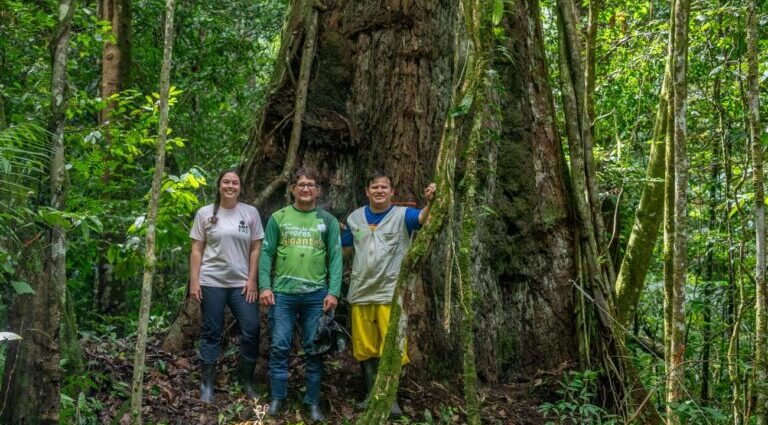South America’s tallest tree, a 400-year-old red angelim in the northern tip of the Brazilian Amazon, is the star of a newly created conservation area called the Giant Trees of the Amazon State Park. The area was officially sectioned off from the larger Paru State Forest on Sept. 30 for stronger protection.
At 88.5 meters (290 feet), the towering Dinizia excelsa tree is nearly as tall as the Statue of Liberty. Researchers encountered it in 2018 when they used airborne lasers to map the Amazon canopy, which typically peaks at 50 m (164 ft). They also identified other trees taller than 80 m (262 ft) nearby.
Now, the 560,000-hectare (1.38-million-acre) Giant Trees of the Amazon State Park has been upgraded to the “full protection” category. This means that activities like logging, permitted under the “sustainable use” category when it was previously part of Paru State Park, can no longer be proposed in its bounds.
While no logging has been documented thus far in the new conservation area, the move future-proofs the area against potential threats.
“The idea behind the reclassification of this area is to protect the giant trees,” Paru State Park manager Ronaldison de Oliveira Farias told Mongabay by phone. “The area is completely preserved, without direct human impact. It’s intact, without residents, and that’s how we want to keep it.”
Under the new rules, tourism and scientific research will be permitted in the area, and limited harvesting of Brazil nuts by surrounding communities will be allowed to continue.
Deforestation has plagued other parts of Paru State Forest in recent years. In 2021, the park lost 1,100 hectares (2,700 acres) of tree cover to logging, gold mining and land clearing, raising concerns that these illegal activities could encroach on the survival of the region’s unique trees.
The government of Pará state and its technical partners say they hope the new park’s tighter protection status will help curb illegal activities, and that a boost of visitors from scientific expeditions and tourists eager to see the continent’s tallest tree will generate income for the surrounding communities.
“We believe this park will not only safeguard the environment but also develop tourism that’s grounded in science and conservation,” Victor Salviati from the Sustainable Amazon Foundation (FAS), one of the organizations involved in creating the park, said in a press release. “These activities will bring social, economic, and environmental benefits to the region.”
Farias also sees potential in tourism, with fishing tourism in the region bringing environmental and social benefits. “If we could work solely with ecotourism and community-based tourism, I would prefer that over forest management, which involves timber extraction,” he said. “I see this as an opportunity. It won’t cause harm.”
Banner image: Farias and collaborators stand in front of the Amazon’s tallest tree. Image courtesy of Fernando Sette/Pará state government.

